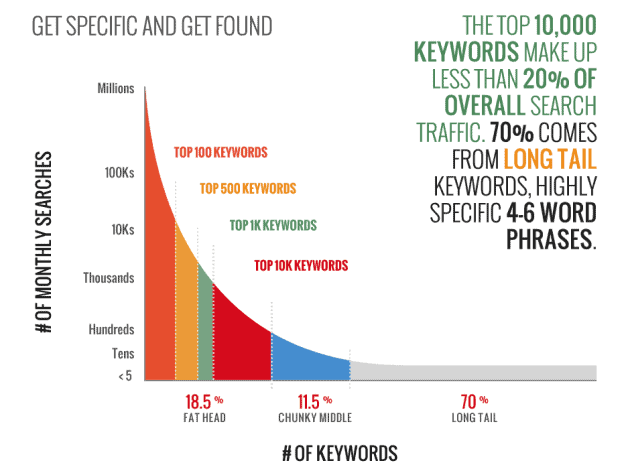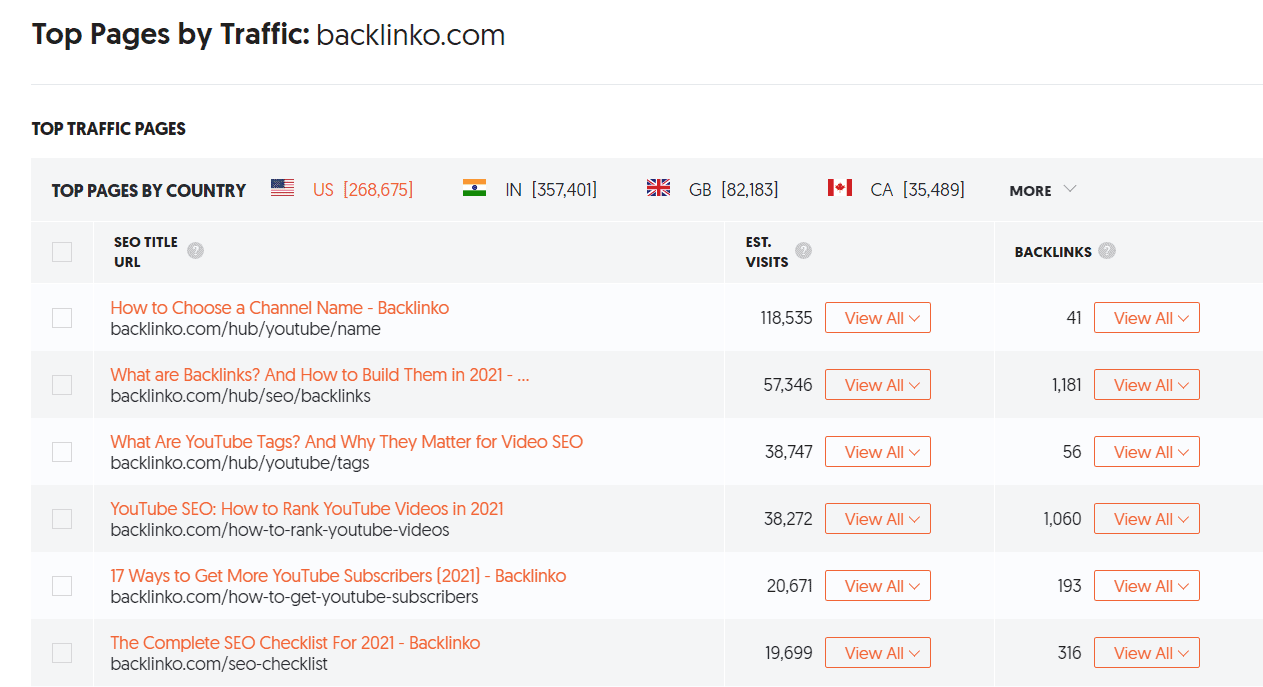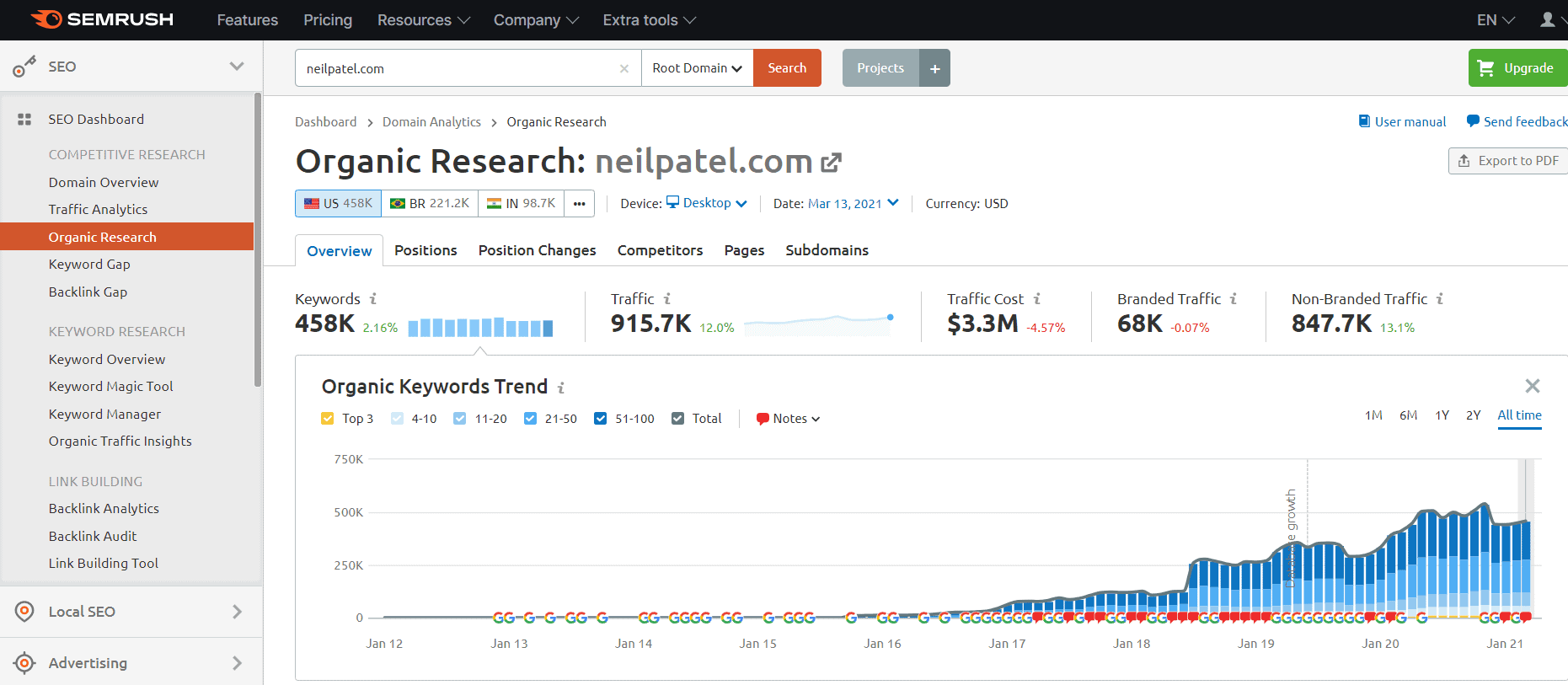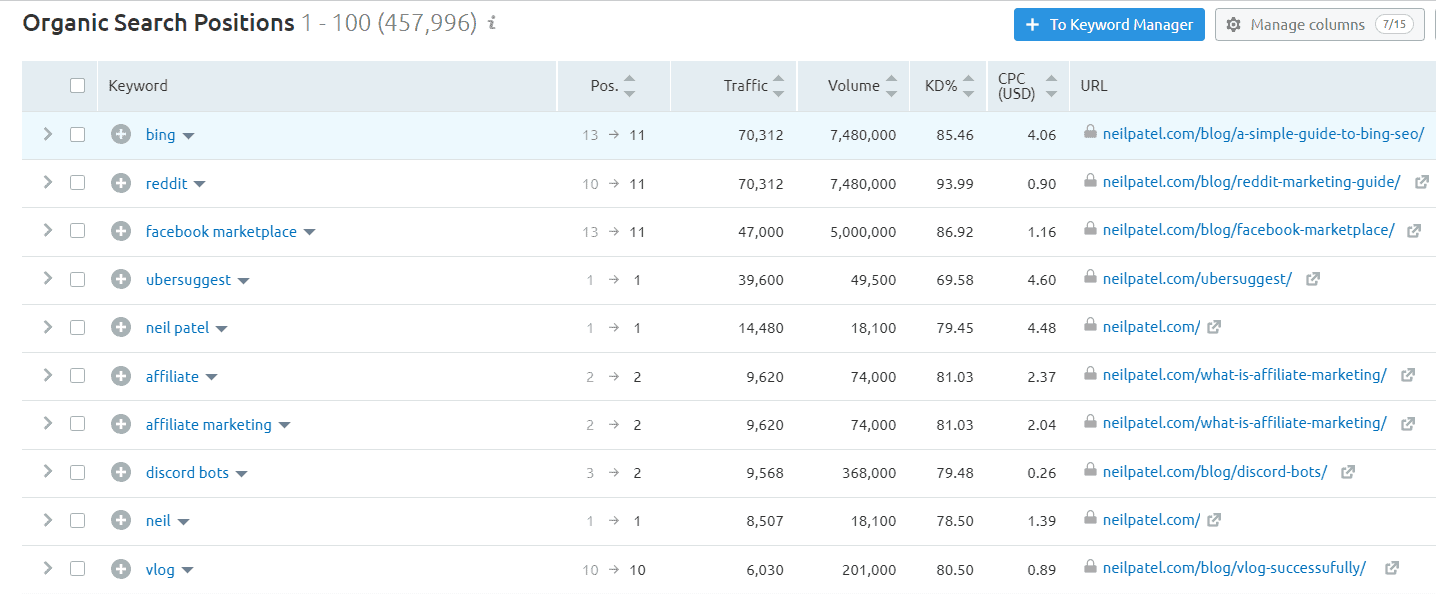Why keyword research or keyword planning is important before you start writing your content?
Many new bloggers were initially afraid of doing keyword research and straightway jumping to the writing the content and later realize the mistake when not getting any traffic to their blog.
In fact, keyword planning is the most critical factor determining the final quality of your content and, eventually success of your post by giving your content an edge over your competitors.
Table Of Content
- What Keyword Research Means?
- What Type Of Keywords To Use?
- How to Find Primary & Secondary Keywords
- How to Find LSI /Related Keywords
- How to Do Competitor Research?
- FAQs Related Keyword Research
Why it is important to do keyword research for the SEO of your post?
Let’s deep dive into the concept of keyword research in the simplest way.
What Keyword Research Means?
Keyword research helps you with finding “better keywords” that you can use within your content to drive more visitors and sales to your websites from search engines like Google.
So, it is the process of finding phrases or words that people use in search engines like Google (to find something online). And the same word you can use in your post so that whenever these words or phrases are searched in Google, your post should be visible to them.
Keyword research benefits:
If you’re wondering about the importance of doing keyword research, here are some of the ultimate benefits.
- Your every single blog post will get targeted traffic from the search engines if you do keyword research first
- Proper keyword research will help you come up with a lot of ideas to select and target an area around which you can create your content (and build a money-making blog)
- Keyword research helps you with generating more sales and revenue for your website
- If you find and use the right keywords, they will also attract quality links
That being said, if you’re struggling to get more traffic from search engines, it’s mostly because of “lack of keyword research”.
Here are the two BIGGEST mistakes most people make with keyword research.
- Not finding any keywords at all
- Finding HIGHLY competitive keywords
You see, if you make any of the above two mistakes, you simply won’t get any search traffic.
What Type Of Keywords To Use?
Stepping in the reader’s shoes helps you write with their expectations in mind that what keywords help you find.
Before you begin writing, you must learn about the different types of keywords.
The first order of business is to learn about ‘Buyer’ keywords. Buyer keywords help us understand what the searchers’ intent is. This helps in niche keyword research.
These are the kinds of words searched for when someone is looking for a product or service. However, every person searching the internet for products and services does not have the same intent.
There are basically three types of keywords used for different intent.
- Navigational keywords – These are the words that navigate users to a brand website. People use these to research products from different brands before they make a decision. Example search term – Dominos
- Information keywords – These are terms that users search for when they’re looking for general information about a topic. People use these terms when they become aware of their needs and are looking for solutions. Example search term – Best gaming laptops
- Transactional (Buyer) keywords – These are the words that users search for when they’ve decided to make a purchase. They’ve already found what they want to buy, and use very specific words to help them find the best deal. Example search term – Acer Aspire the best price
How to Find Primary & Secondary Keywords
‘Primary keywords’ define the ideas and subjects that are related to your content.
These are the main keywords for which you want to rank. You are optimizing these primary keywords so that you can rank in search engines like Google.
For example, “best laptops for students” is a primary keyword you can target.
Secondary keywords are the supporting keywords that are highly relevant to your primary keywords.
Secondary keywords can include:
- Best laptops for students in India
- Best budget laptops
- Best student laptops under $500
And so on
Each piece of content that you put out must have at least one primary keyword assigned to it. This indicates to search engines and readers that your post is about that keyword.
There are loads of tools on the internet that will help you find primary keywords. This will also help to find niche keywords. Here are some of the most popular ones:
Ahrefs Keywords Explorer – This keyword explorer gives you in-depth information about the keywords you’re looking for.
Not only do you get the search volume of the term, but Ahrefs also tells you exactly how many backlinks you need to get to the first page on Google.
Google Keyword Planner – Although Google’s Keyword Planner is not as feature-rich as some of the other tools available, the data comes straight from Google – so you know exactly what the keyword’s rating is.
It also gives you a “Top of the page bid,” which indicates how much advertisers are spending per click for a specific keyword. You need to create a GoogleAds account to access this tool.
KeywordTool.io – This tool gives you a TON of keyword suggestions, all of which can be filtered based on location and search engine.
KeywordTool.io also allows you to generate keyword ideas by analyzing your competitors’ keyword usage.
How to Find LSI /Related Keywords
LSI keywords (Latent Semantic Keywords) are the words or phrases that are related to or are synonyms of the primary keyword. For examples:
- Best educational laptop
- Best laptop for college
Including three to five related keywords is best since it loads the post with additional context. This helps search engines rank a page better.
Here are some tools that will help you find LSI keywords:
Moz Keyword Explorer – Moz is a very powerful tool that supplies loads of untapped, out-of-the-box lateral keyword ideas.
It also shows you the ‘Organic CTR’ and the ‘Priority’ of the keywords you pick. These features indicate how many clicks you can expect from the keyword.
Keywords Everywhere – It is a plugin available for both Chrome and Firefox that helps you find related keywords. It works while you’re browsing Google. While it started as a free extension, it is now a paid tool.
It supplies effective keywords since they capture audiences looking for content, not products.
Using tools is the best way to find keywords for your content. Not only do they provide you with a lot of ideas for your post, but they also help you see if your post will pull a substantial volume of visitors.
Finding the primary and LSI keywords will help you frame your posts’ content in just a few minutes. Say you decide to write about laptops. If you pick the primary keyword ‘gaming laptops’, then the LSI keywords could be ‘Best gaming laptops’, ‘Best gaming laptop review’, and ‘Best gaming laptop sale’.
These are long-tail keywords. and the best way to increase your search traffic quickly is to “target long-tail keywords”. Long-tail keywords generally contain 4 to 6 words. Like- ‘Best gaming laptop under $500’.
Long-tail keywords contribute 70% of total traffic.

How to Do Competitor Research?
Competitor research is all about finding and analyzing your competitor's websites to find their strengths and weaknesses. You can use it to literally find out everything about your competitor sites to see what’s working well for them and what’s not.
Here are some of the benefits of competitor research:
- It helps you get better content ideas.
- It helps you find a ton of money-making keyword ideas that generate more sales.
- It helps you find high traffic generating topics, And the list goes on.
All in all, if there’s only one thing that helps you quickly build a money-making blog, it is “competitor research”.
So let’s talk about how you can perform competitor research with ease.
First things first.
Make a list of 10 to 15 sites in your niche (your competitors’ sites).
Are you done? Make sure to use a Google Spreadsheet to list your competitors so you can browse them whenever you want.
There are two ways to perform a detailed analysis of your competitors, which includes;
- Doing it manually
- Using an ultimate competitor research tool
Doing it manually can take a lot of time. You won’t get any accurate data as well.
So the only option left is to use a solid competitor research tool. There are so many choices out there, but we’ll just talk about two tools.
- Ubersuggest
- Semrush
Let’s talk about how you can use these two tools for competitor research.
⇒ Using Ubersuggest For Competitor Research
Here’s the simple step-by-step tutorial on using Ubersuggest for competitor analysis.
Step 1: Open Ubersuggest and enter the domain of your competitors.

As you can see above, we are taking the example of Backlinko.com. Hit Search to continue.
A quick tip: Make sure to sign in so you can unlock more features from Ubersuggest.
Step 2: Once you enter a domain for analysis and hit the search button, Ubersuggest instantly shows the domain’s overview.
Here’s how it looks like;

As you can see, it gives so many insights into a domain, including;
- Organic keywords
- Monthly traffic
- Backlinks
- Domain Authority
That means you can easily estimate the traffic of any site in the world. The best part is that you can also find a list of all the organic keywords that send more traffic to your competitors.
Step 3: Finding high traffic pages
Ubersuggest helps you easily find high traffic pages of your competitor sites. Just click on the top page under Traffic Analyzer, and it will give you all the results.

Once you know the top-performing page of any site, you can create great content on similar topics to get more traffic and backlinks to your site.
So there you go! That’s how you can use Ubersuggest to find better content ideas, backlink sources, estimated traffic, etc., of your competitor sites.
⇒ Using Semrush For Competitor Analysis
When it comes to competitor research, there’s one tool I often use, which is Semrush.
Yes, Semrush is one of the widely used SEO tools for competitor analysis. It’s used by over six million people worldwide, making it one of the most popular SEO tools.
Here are some of the things you can do with the Semrush tool:
- Competitive analysis
- Keyword research
- Site audits
- Keyword rank tracking
- Backlink analysis
- Site positioning
- Content creation ideas
And the list goes on.
Let’s talk about a simple tutorial on how you can use the Semrush tool to perform competitor research to do well in search engines and increase your website traffic.
Step 1: Go to Semrush dashboard, click on Organic Search and enter any of your competitor’s website URLs.
I entered NeilPatel.com as an example. Here’s how it looks like:

As you can see above, it’s showing all the keywords your competitors are ranking for, along with the amount of traffic they are generating and overall traffic cost.
Step 2: Finding organic search positions of your competitors
You can use the Semrush tool to easily find a list of all the keyword positions of your competitors.
Here’s how it looks like:

Semrush competitor research tool shows us a list of all the keywords and their positions, traffic, volume, and KD, along with CPC.
Step 3: Using filters or sort to find low competitive yet high ranking topics
This step is where you can use Semrush filters to find a ton of useful post ideas you can cover on your blog to drive more traffic and sales to your site.
As you can use the filters to “show keywords with monthly searches below 1000” and Semrush shows up all the list of keywords around that filter that are easier to rank for.
So there you go. That’s how you can use both Ubersuggest and Semrush competitor research tools to find golden keywords to get higher search rankings easily.
FAQs Related Keyword Research
1. Why keyword research is important in SEO?
- Know your Competitive Power.
- Focus on Highly Relevant, Low Competition Keywords.
- Utilize Keywords Already Driving Traffic to Your Site.
3. What is the best keyword research tool for SEO?
Here are some best tools for keyword research for SEO:
- Ubersuggest
- Ahrefs
- Google Keyword Planner
- Long Tail Pro
- SEMrush
Wrapping Up
When it comes to keyword research for the SEO of your blog, the best thing to do is to be patient and keep looking. The longer you keep at it, the more you’ll uncover.
Almost 60% of the entire population uses the internet, and most of these people specifically search for content they want to consume. This will help research your niche keywords.
This is why efforts must be made to generate organic traffic, rather than generate traffic via ads – and the best way of pulling traffic organically is by doing keyword research and using the right keywords, and building high-quality content.
Over to You.
Cheers 🙂



Hi Dear,
ReplyDeleteI visit your website daily.
Your articles look great & helpful .
I feel very good reading your posts
You can visit my website For How to do Competitor research in the right way SEO Learning & Keyword research and i provide seo related video full free on my website ...
I'm sure you'll keep my invitation..
Thank You..